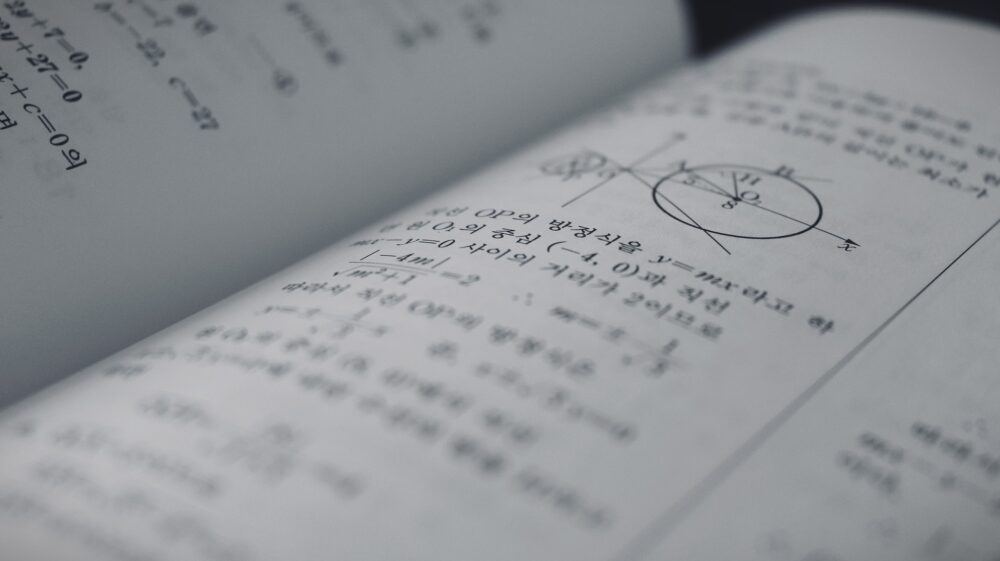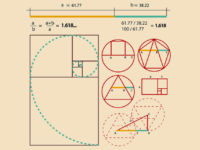Many people, beleaguered college students especially, can find it challenging to appreciate mathematics because of the way it’s presented: it’s difficult to see the beauty in a toolkit. But math isn’t only a set of tools, it is also an entity unto itself, rich with gorgeous intricacy. Like a language, it is a colorful and complex interplay between all of its parts – and we’ve taken a massive leap in being able to translate it.
This leap was made by the Langlands program, an ambitious project to draw astonishing connections between disparate fields of mathematics. The program was born fifty years ago as a handwritten letter by Robert Langlands, Professor Emeritus of Mathematics at Princeton University. Since then, it has been developed from one single conjecture into a complex network of them – and has recently won Langlands the Abel Prize, the mathematics equivalent of the Nobel. “Such a mathematical ‘program’ is a diffuse collection of interconnected facts, suggestions, and relationships, all pointing to something far greater and undefined,” explains Robbert Dijkgraaf, a mathematical physicist and a colleague of Langland’s. “Some parts are proven, others are only conjectures, and nobody knows exactly how far the vision extends.”
Like a language, math is a colorful and complex interplay between all of its parts – and we’ve taken a massive leap in being able to translate it.
Langlands first proposed his idea in 1967 in a letter to eminent mathematician André Weil, then later solidified it in his 1970 publication Problems in the Theory of Automorphic Forms. Even he couldn’t have guessed the far-reaching impact his ideas would have: “After I wrote it,” he later said of his 1967 letter, “I realised there was hardly a statement in it of which I was certain.” Since then, it has been built upon by the collaborative efforts of mathematicians the world over, drawing unprecedented links between disciplines of mathematics thought to be entirely unrelated. The span of these connections is so vast – earning it the moniker “grand unified theory of mathematics” – that even those who work closely with it struggle to grasp its sheer scale and intricacy. “It’s almost like you are an archaeologist and you dig up a stone in the desert—and it turns out to be the top of a pyramid,” Dijkgraaf told Scientific American.
The program has been likened to a modern mathematical Rosetta Stone: where the original artifact contained the same written passage in three languages, the Langlands Program contains certain mathematical phenomena that can be obtained using approaches from wildly different mathematical subfields. “The discovery of such a dictionary is extremely valuable,” wrote Dijkgraaf in an article for the Institute of Advanced Study, Langland’s home institution, “because it enables one to translate the problems of one language into the concepts of the other. If you are lucky, the perspectives and tools of one world can be used to solve a difficult question from another world.” Indeed, this is why this project is so groundbreaking: it provides mathematicians with new inroads into seemingly unsolvable problems, rocketing mathematical discovery forward.
Many mathematicians have been recognized for discoveries made possible by their work with the Langlands program, revealing new approaches to previously uncrackable problems borrowed from other areas of math. Most famously, involvement with the program allowed British number theorist Andrew Wiles to solve Fermat’s last theorem, earning Wiles the Abel Prize in 2016.
The most important connections established by the Langlands program were made between harmonic analysis and number theory. Harmonic analysis is very broadly the study of periodic waves, of which sine waves are a familiar example. Automorphic forms are a generalization of the mathematical concept of periodic waves, but are more geometrically complex. Ongoing work in the field of number theory, the study of the characteristics of numbers, reveals a number of symmetries in the relations between numbers: for example, solutions to polynomial equations exhibit a certain symmetry, sometimes with each possible solution differing from the other only by a sign change. The table of these symmetrical relations is called a Galois group, named for a nineteenth century French mathematician Evariste Galois. The Langlands program reveals a fascinating convergence of these two disparate phenomena, and an unexpected one at that: it seems unlikely that number theory, where numbers are often without discernible order, could be so closely linked to harmonic analysis, which is characterized by continuous curves and elegant symmetries.
It seems unlikely that number theory, where numbers are often without discernible order, could be so closely linked to harmonic analysis, which is characterized by continuous curves and elegant symmetries.
A specific example of this connection is a type of polynomial equation called an elliptic curve. According to the modularity theorem, by counting the number of points on an elliptic curve where you can modulus that point by a prime number, you create a sequence of numbers. This sequence can be replicated by an entirely different type of mathematical object – the modular curve – which can be (very roughly) approximated by a periodic wave, placing it firmly and unexpectedly in the realm of harmonic analysis.
Dijkgraaf compares Langland’s work to the parable of the blind men and the elephant: one man feels a leg and calls it a tree; another man feels the trunk and calls it a snake; an ear becomes a fan, a flank becomes a wall. But Langlands pieced together an elephant, and other mathematicians have been using and expanding on his vision every since. There are a multitude of unsolved problems in mathematics that continue to shield their true natures from curious minds. As the Langlands program continues to grow, who knows what new insights can be found, creating new inroads into solving mathematical mysteries one unlikely connection at a time.
And, of minor importance compared to the academic impact of his groundbreaking project, Langlands is now $775,000 richer.

